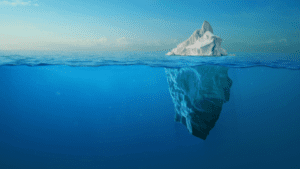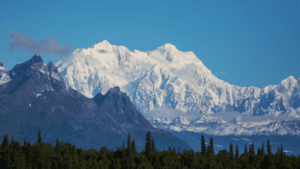
What are the coldest places on earth?
There are many coldest places on earth where the temperature is always below freezing. These places are not densely populated. Lets us take a closer look at the top 10 list of some of the places that are known as the coldest places on earth
1. Vostok Research Station
Location and coordinates
Vostok research station is the coldest place on earth with approximately 1,301 km (808 mi) from the geographical south pole in the middle of the eastern Antarctic ice sheet. It is 3,488 meters high above sea level. The exact location is 78°28´58´´ south, 106°50´54´´east.
Climate
The climate of Vostok station is very dry. The average temperature of the cold season is about -65°c and the warm season is about -42°c. It has been reported that Vostok reached a temperature of -91°c on 28th July 1997. The annual precipitation of Vostok station is only 22mm.
Flora and Fauna
Some types of algae, bacteria, fungi, etc. can be seen. Plants and animals cannot survive in this station due to the extreme cold.
Human habitation
The Russian Vostok station opened in December 1957 and has an average summer population of 25 and an average winter population of 13.
2. Dome Fuji
Location and coordinates
The coldest place on earth is Dome Fuji an ice dome rising about 3,700 meters to the east of Queen Maud Land. It is located in East Antarctica. The elevation of Dome Fuji is 3,810 meters (12,500 feet) with 77°30´south, 37°30´east coordinates.
Climate
Dome Fuji is the coldest place on earth. The temperature rarely rises to -30°c in the summer and can drop to -80°c in winter. The average annual temperature is -54°c. The annual precipitation of Dome Fuji is 25mm
Flora and Fauna
This place is permanently covered by ice. Some types of lichens, mosses, algae, etc. can be seen here. In this station, there are no land animals except nematodes, springtails, mites, midges, humans, and their laboratory animals.
Human habitation
The climate in this station is too dry. The temperature in this station is below the freezing point. People cannot survive this station due to lack of oxygen, extreme cold, and lack of humidity in the air.
3. Oymyakon
Location and coordinates
In the third number, the coldest places on earth are the Oymyakon. It is a rural area in the Oymyakonsky district of the Sakha Republic of Russia, 30 km northwest of Tomtor on the Kolyma highway, on the banks of the Indigirka River. It is the coldest inhabited village on earth. Oymyakon is 2428 feet high above sea level.
Climate
The climate of Oymyakon is cold and dry. The average annual temperature is -16°c in Oymyakon. The rainfall is around 9.1 inches per year. The average temperature in summer is 13°c, and in winter is -46°c. On February 6, 1933, a temperature of -67.7°c was recorded.
Flora and Fauna
The northern tundra has few plants beyond mosses, lichens, and cotton grass. Even with the area’s cold climate many animals live here year-round including bears, foxes, moose, and burrowing species. During the warmer months, many birds live here.
Human habitation
Oymyakon is the coldest place on earth, but people live there. Oymyakon is a tiny hamlet in Russia with a population of around 500.
4. Verkhoyansk
Location and coordinates
Verkhoyansk is a town in the Verkhoyansky district of the Sakha Republic of Russia and on the banks of the Yana River near the Arctic Circle. The elevation of Verkhoyansk is 2,389 meters (7,838 feet). Its coordinates are 67°33´North, and 133°23´ East.
Climate
Verkhoyansk has a dry climate with little rainfall. Average temperatures range from -45°c in January to 16.5°c in July. The average annual precipitation is 180 mm. The lowest temperature recorded in Verkhoyansk was -67.8°c in February 1892.
Flora and Fauna
The northern tundra has few plants outside mosses, lichens, and cotton grass. There are the arctic fox, reindeer, white hare, lemming, and common and willow ptarmigan seen here.
Human habitation
Verkhoyansk is an inhabited locality. At the census of 2010, there were 1,311 people who lived in Verkhoyansk.
5. North Ice, Greenland

Location and coordinates
North Ice is a research station located in north Greenland. The place is 2,341 meters above sea level. It is located in the interior ice of Greenland. Its coordinates are 78°04´North, 38°29´West.
Climate
The lowest average temperature in this station is -20°c in February. The temperature can rise to more than 20°c in June, July, and August. From December to March, there is heavy snowfall. The station recorded the lowest temperature ever in North America with -66.1°c on January 9, 1954.
Flora and Fauna
In this station, the ground is covered with a carpet of mosses and low-lying shrubs such as dwarf willows and crowberries. There are polar bear, musk oxen, caribou, arctic foxes, hares, and eagles, are seen in this station.
Human habitation
The climate is very dry. The dense population is not seen in this station. Because of the lack of humidity in the air and extreme cold. There are about 135 permanent people living in this station.
6. Sang, Yukon, Canada

Location and Coordination
Sang is a village located on the Alaska Highway, 25 km east of Beaver Creek, Yukon, Canada. The region is located in a bowl-shaped valley of the white river. The coordination of this place is 62°23´North, 140°23´West.
Climate
The highest average temperature of Sang is 0°c (32°f) and the lowest is -12.2°c. The lowest recorded temperature was -62.8°c on February 3, 1947, with 39 cm of snow on the ground.
Flora and Fauna
Their black spruce, quaking aspen, white spruce, and balsam are found throughout much of the territory. Some of the largest mammals found throughout the region include caribou, moose, grizzly, and American black bears.
Human habitation
An aboriginal village is also located approximately 8 km away. It was a military aircraft field established as part of the northwest stage route that closed in 1947. In 1947 Sang village boasted of eight to ten First Nation people and fur traders.
7. Fort Selkirk, Canada
Location and coordination
This is a former trading post located along the Pelly River and the Yukon River. It is located in Yukon, Canada, and today, it is widely renowned as a historic site that is owned and managed jointly by Selkirk’s First Nation and the Yukon Government Department of tourism and Culture. The coordination of this place is 62°45´North, 137°22´West.
Climate
The highest average temperature in Fort Selkirk is 19°c in July and the lowest is -16°c in January. The weather and the climate of Fort Selkirk are perfect for winter. Precipitation here is about 20.5 inches per year.
Flora and Fauna
There are some types of mosses, lichens, algae, etc. that can be seen here. Common mammal species that can be seen by river travelers include moose, black bears, coyotes, red foxes, arctic ground squirrels, rabbits, and muskrats.
Human habitation
By 1916, fort Selkirk had a First Nation population of around 160 people. In 1932, that number had dwindled to 87.
8. Mount McKinley, Alaska

Location and Coordination
Mount McKinley is the highest mountain peak in North America. It is 6,190 meters high above sea level. Located in the Alaska range in the interior of the U.S. State. Mount McKinley is the centerpiece of Denali National Park and Preserve. It is the third most isolated peak on earth, after Mount Everest and Aconcagua. Situated at 63°04´10´´North, 151°00´27´´ West.
Climate
The mountain has recorded a temperature of -59.7°c on December 1, 2003. In July the station has recorded temperatures as low as -30.5°c. There is only about 8 to 13 inches of rain every summer. There is an average of 180 inches of snow every winter. During January, the average high temperature is 11°c and the average low is -7°c.
Flora and Fauna
650 species of flowering plants, mosses, lichens, fungi, and algae grow on Mount McKinley. There are about 39 species of mammals, 167 species of birds, 10 species of fish and 1 species of amphibians
Human habitation
The Koyukon Athabaskans were the first native Americans to be able to access the shores of the mountain. They live in the Yukon, Tana, and Kuskokwim basins. There are many base camps on Mount McKinley. Many tourists come to Mount McKinley to see the mountains and climb, ski, and research.
9. Stanley, Idaho
Location and coordination
Stanley is a town in the center of the U.S. state of Idaho. This place is 1,9o6 meters (6,253 feet) high above the sea level. With coordination of 44°13´0´´ North, 114°56´16´´ West
Climate
July is the warmest month in Stanley, Idaho, with an average high temperature of 26°c and an average low temperature of 2°c. Whereas December is the coldest month with an average high temperature of -4.2°c and an average low temperature of -18.8°c.
Flora and Fauna
A small portion of the forest is in the coastal western Hemlock Xeric Maritime Subzone. There are many small wild animals living in Stanley like eagles, beavers, great blue herons, etc. seen here.
Human habitation
Stanley, Idaho’s estimated population is 69 according to the most recent United States census estimates. As of the census of 2010, there were 63 people living in Stanley.
10. Rogers Pass, Montana, US
Location and coordination
Rogers Pass is a mountain pass and is located on the continental divide in the U.S. state of Montana comes to 10 in the rank of the coldest places on earth. It is 1,710 meters (5,610 feet) high above the sea level. The exact location is 47°04´35´´ North, 112°22´11´´West
Climate
Rogers Pass has a subarctic climate with an average high in January of about -7°c and in July of about 20°c. On January 20, 1954, a low temperature of -57°c (70°f) was recorded as a severe cold wave. According to the Koppen climate classification system, Rogers Pass has a humid continental climate, briefly “DFB” on the climate map
Flora and Fauna
The main species of tree in Rogers Pass are Engelmann spruce, western hemlock, and western red cedar. Birds like Golden eagles and the bald eagles are common. Tundra swans, snow geese, northern goshawks, great bears, scapegoats, etc. are also found in this region.
Human habitation
The climate in this region is dry. There is a low relative humidity in the air in this place. The human cannot survive this place due to a lack of humidity in the air and extreme cold temperatures.
